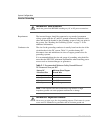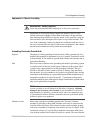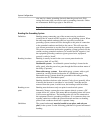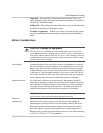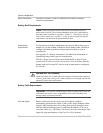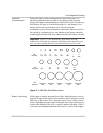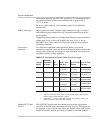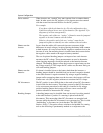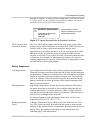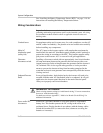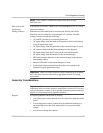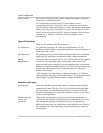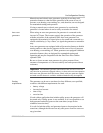
Pre-Configuration Planning
976-0043-01-02 2–15
inverters to meet NEC/CEC compliance. Two amperage ratings are
available: a DC250 (250 amps) and a DC175 (175 amps) in either single-
or double-pole configurations for single or dual inverter installations.
See “DC Disconnect Boxes (DC175/DC250)” on page 2–24 for
additional information on the Xantrex DC175 and DC250.
After selecting battery cables based on the distance from the battery bank
to the inverter, add battery overcurrent protection in the battery cable line,
based on Table 2-3. This table will help you to determine your maximum
breaker/fuse size based on the cable size you selected previously.
Fuse Block (TFB) Some installations may not require conduit(s) or a disconnect device,
however, overcurrent protection is still required. Xantrex offers a fuse
block (TFBxxx) providing the code-required inverter overcurrent
protection for these applications. These fuses are available in 110, 200,
300 and 400 amp sizes.
Battery Requirements for Dual Inverter Systems
The success of “stacked” or “dual” inverter systems is dependent on the
quality and maintenance of the DC connections. Stacked inverter sets are
far less forgiving to long, undersized, uneven, and/or poor connections
than are single inverters.
Dual inverters
(not stacked)
Dual inverter configurations can be used without using the stacking
interface cable. In this configuration, two inverters separately run isolated
loads from the same battery bank or individual battery banks.
Table 2-3
Battery Cable to Maximum Breaker/Fuse Size
Cable Size Required
Rating in
Conduit
Maximum
Breaker/Fuse
Size
Rating in
“Free Air”
a
a. The term “free air” is defined by the NEC/CEC as cabling that is not
enclosed in a conduit or a raceway. Cables enclosed in conduit or
raceways have substantially lower continuous current carrying ability due
to heating factors.
Maximum
Breaker/Fuse
Size
#2/0 (00) AWG 175 Amps 175 Amps 265 Amps
300 Amps
b
b. The NEC/CEC allows rounding to the next highest standard fuse size
from the cable rating (i.e., 150 amp cable size rounds up to a standard
175 amp size).
#4/0 (0000) AWG 250 Amps 250 Amps 360 Amps
400 Amps
b
Important: From this point on in this guide, any reference made to a “DC
disconnect” means either a DC breaker or a fuse with a disconnect switch, which
will depend on your specific type of installation.




